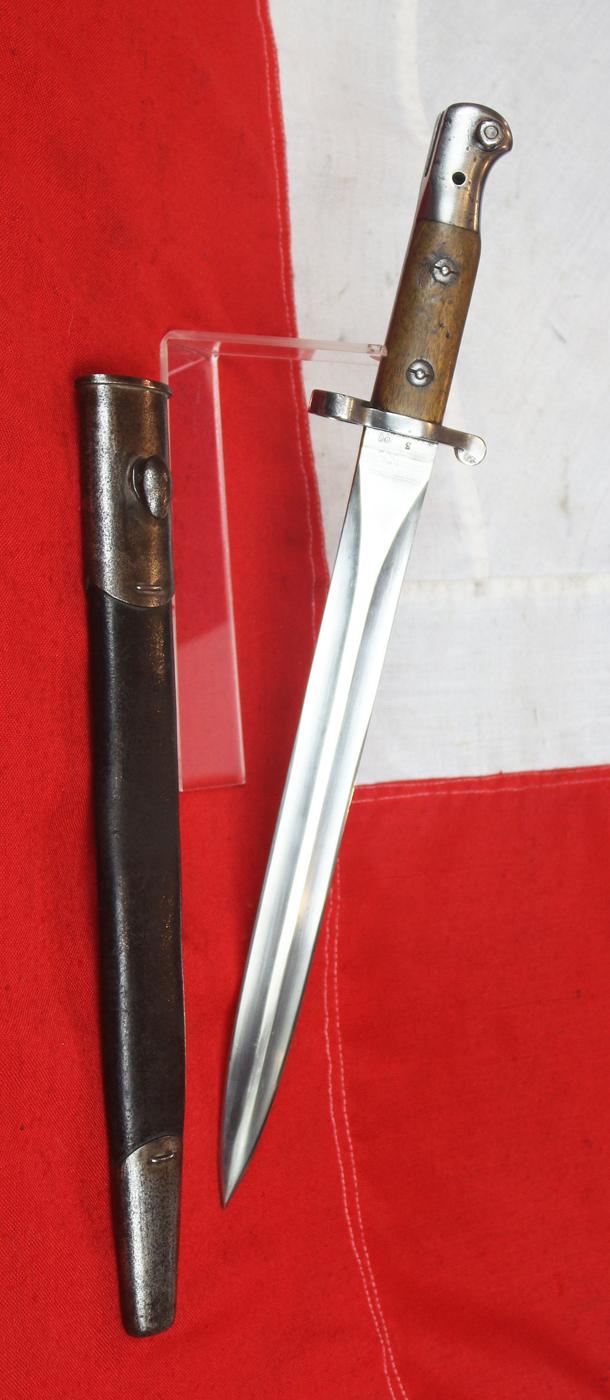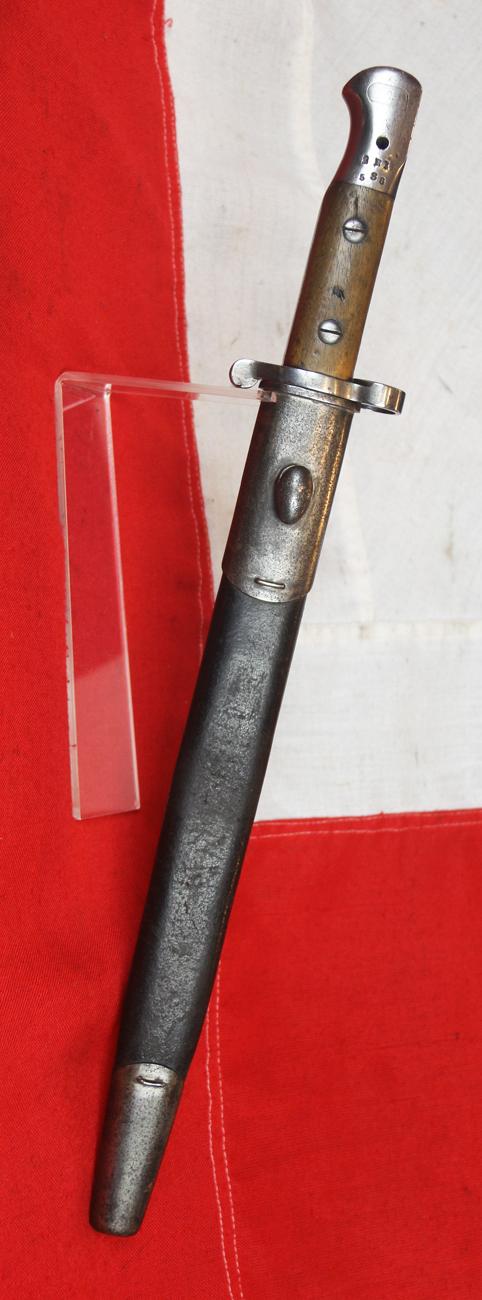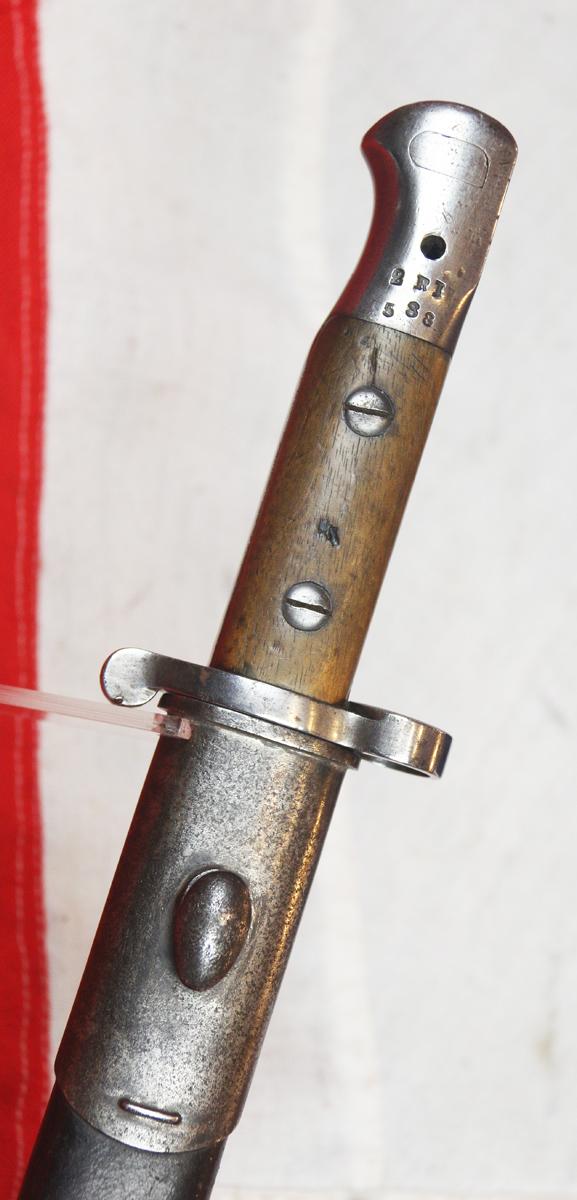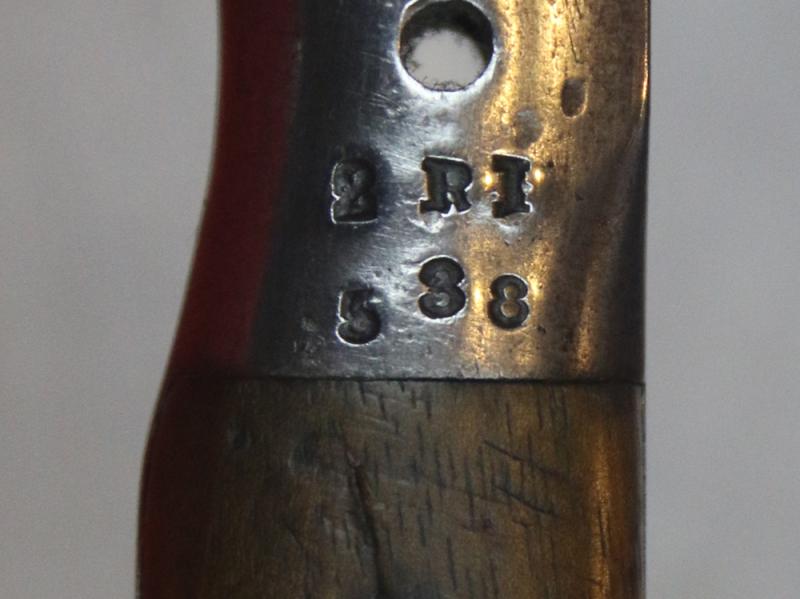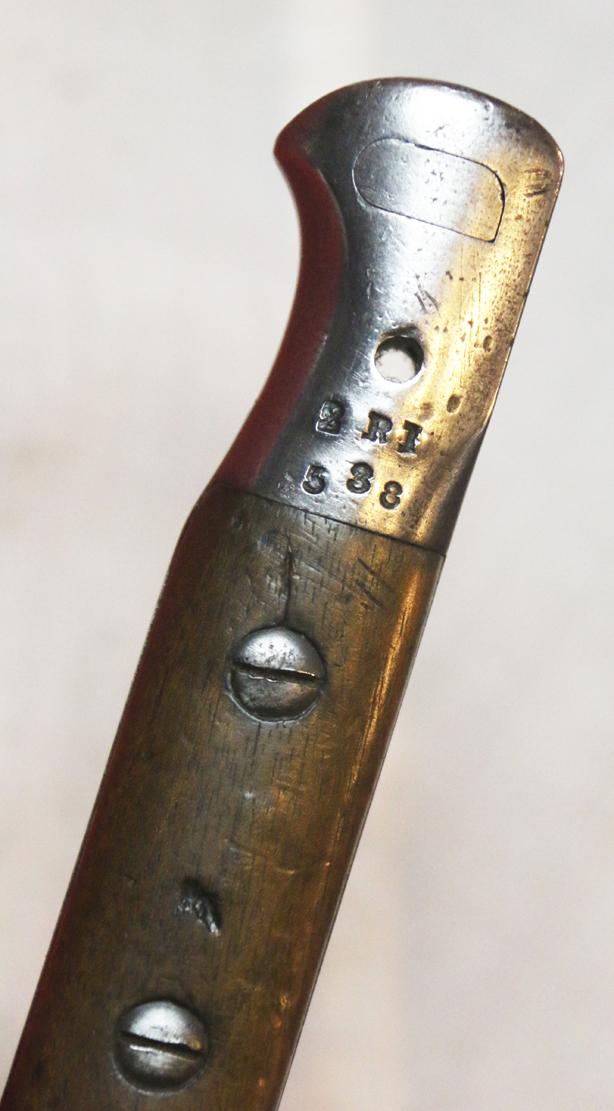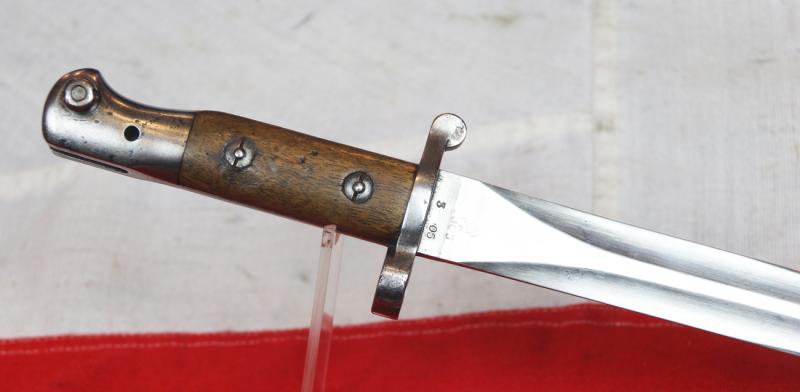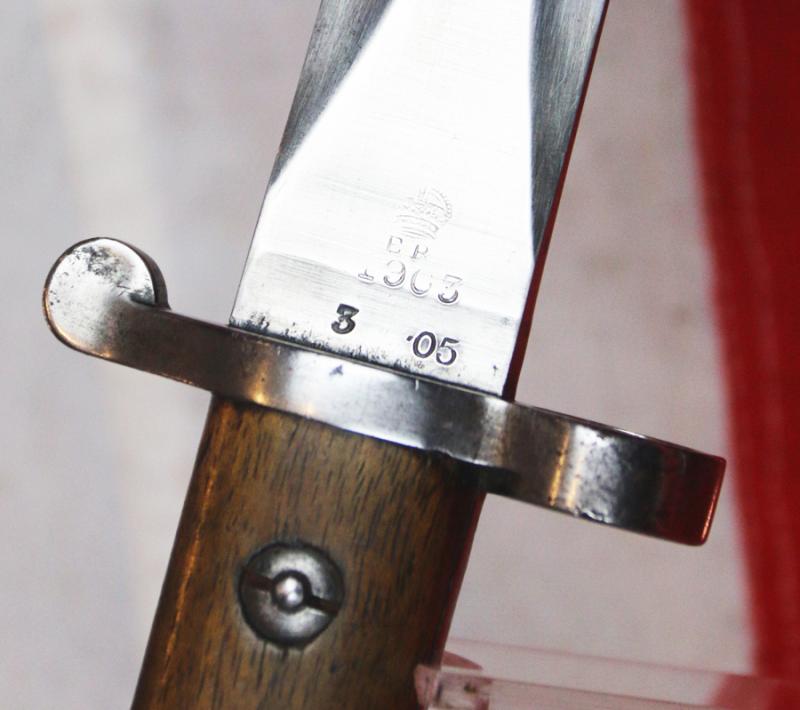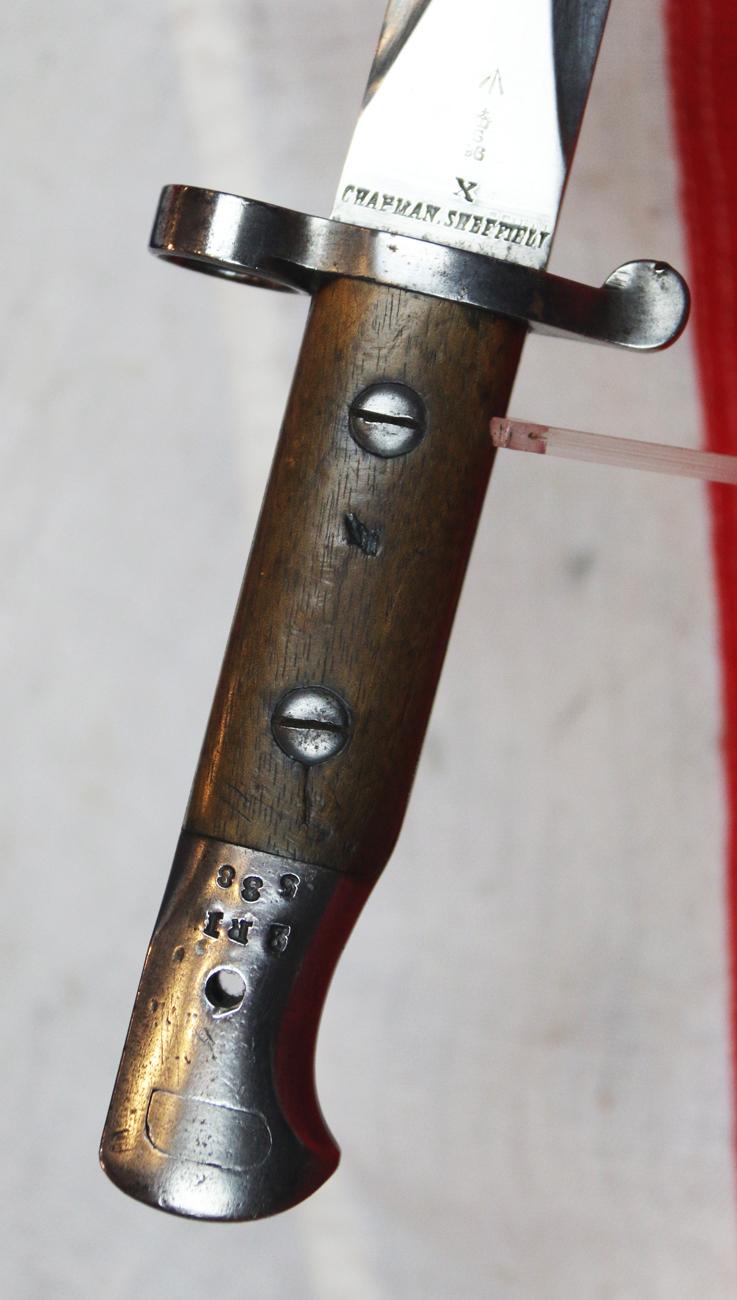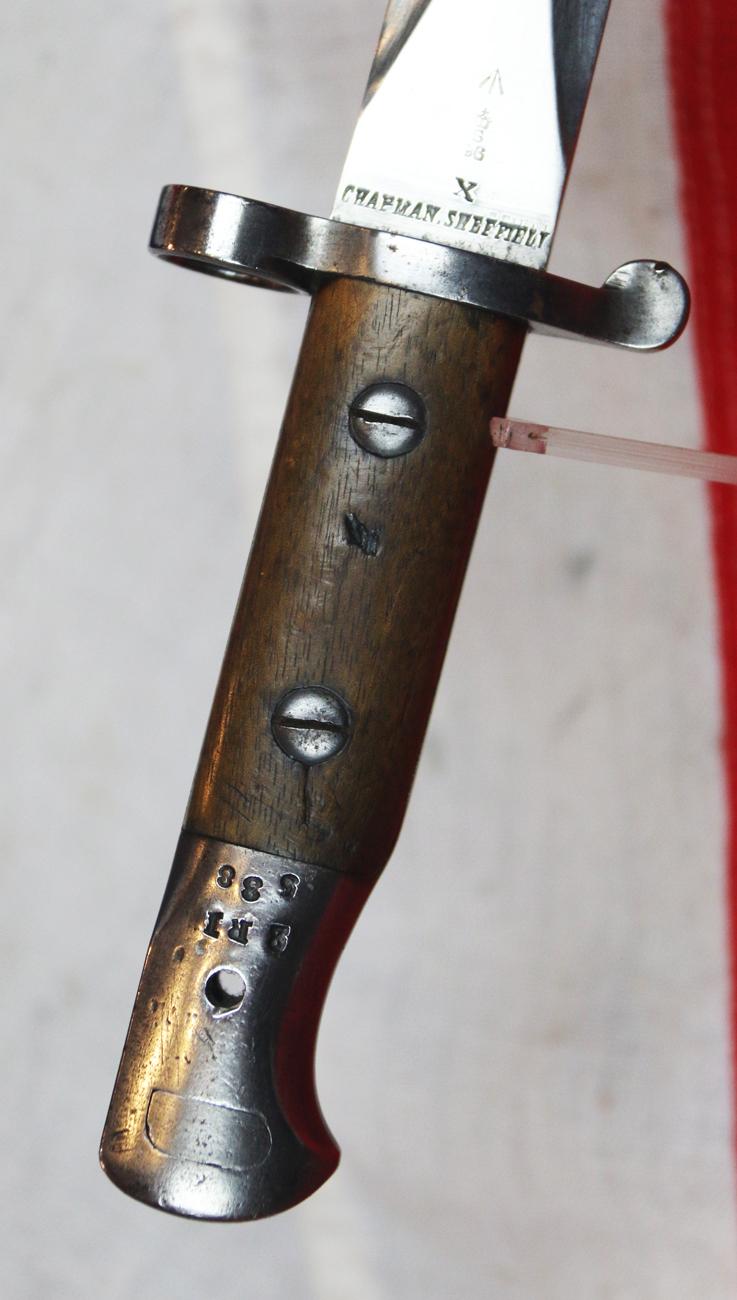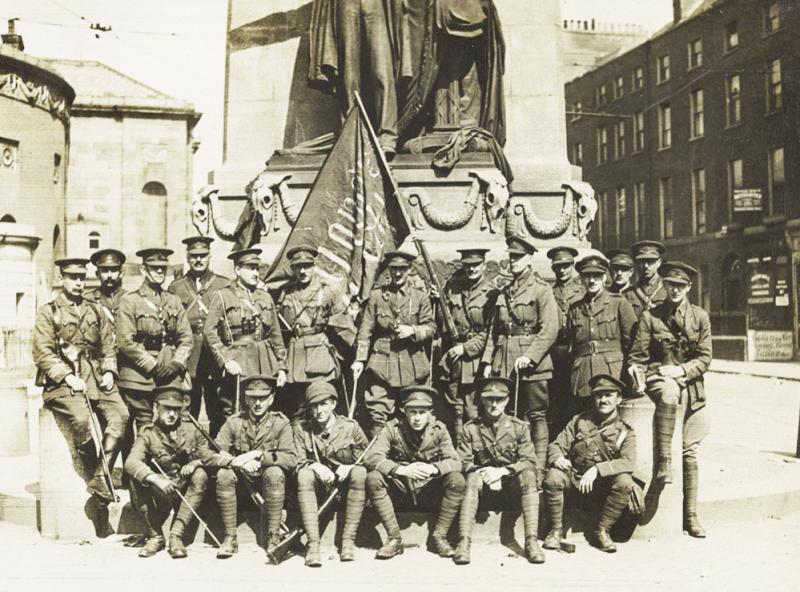A Most Scarce, Edwardian, 2nd Battalion Royal Irish Regt. Long Lee Enfield 1903 Bayonet, To Fit & Use With The Long Lee Enfield & The MK III SMLE Enfield
Edwardian period, maker marked by Chapman of Sheffield. Regimentally stamped, R.I, and dated 1903 and maker marked. Used from 1903 and right through WW1. Superb bright blade and russetted surface steel mounts, with steel mounted leather scabbard. The earliest WW1 Enfield Rifle Bayonet, made from the earlier 1888 bayonet pattern blade, and designed for the early Long Lee in 1903, with cleaning rod removed, yet also fitting it's pre war replacement the Short Magazine Lee Enfield. This pattern of rare bayonet was only made for four peacetime years from 1903 until 1907 when it was changed for the long blade 1907 SMLE pattern.
Made in relatively small numbers hence its rarity to survive today.
We bought the entire small collection from the widow of a 'Best of British Empire Rifles and Bayonets, Both British and German' collector, who acquired them over the past 40 years, and only ever kept the very best he could afford to keep. Act fast they are selling really fast, three rifles and eight bayonets and a cutlass have sold today alone. Top quality and condition,19th and 20th century scarce British and German collectables are always the most desirable of all.
A very brief history lesson of the 2nd Royal Irish during their first two months of WW1;
The men who served with the 2nd battalion during the first two months of the war partly because the events that unfolded between August and October 1914 are in themselves extraordinary. In a few short weeks there took place the first hostile contact between the British and the Germans at Mons, the crucial battle of Le Cateau, the long and hot retreat to the outskirts of Paris, the successes on the Marne and the stalling of the allies’ advance at the Aisne. Then, at the beginning of October 1914 the battalion was redeployed north and took part in the fighting around La Bassee. On the 20th of October at Le Pilly, they were surrounded and overwhelmed. All but 135 men and one officer were either killed, wounded and/or taken prisoner. This means that since they had disembarked in France on 14th August well over a thousand members of the battalion had become casualties. Such a casualty rate among the battalions of the First World War may not in itself be exceptional. However, what needs to be taken into account is the fact that many of those who proceeded to France with the 2nd Battalion Royal Irish Regiment had been serving together for years and in some cases decades. Some may have fought together in the Boer War or have had a shared experience of the hardship of years of service in India. They genuinely were comrades in arms, which must have made the destruction of this regular army battalion all the more affecting for those who survived. The first day of the Somme may well have produced equally shocking statistics. However, the close camaraderie of the regular army was by then a thing of the past and replaced by a weary acceptance of the brutalities of trench warfare and an understanding that too great an investment in those around you was best avoided. It is the poignancy of all those friendships and long-standing associations torn asunder in eight short weeks that makes this tale so compelling. ref; PATRICK63223 IWM
Ten battalions of the regiment saw service during the First World War (1914-18). They suffered over 3,200 killed in action and thousands more wounded in places such as Le-Pilly, Gullimont, Ginchy, Salonika, Mesopotamia and Palestine.
Members of the Royal Irish were also the first British Army troops to confront the Irish rebels during the Easter Rising of 1916.
The IWM 'Lives of WW1' is a remarkable website community to learn so much about the stories of the regiments and their gallant men in the Great War, heroes, one and all!
Code: 25147
395.00 GBP

